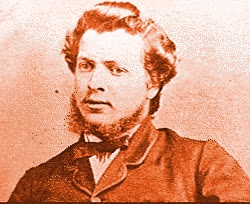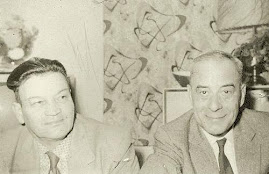The Metis Hunt for Justice continues. In Alberta, the previous leadership (Premier Klein) was willing to try and negotiate a deal with the Alberta Metis to ensure that the implication of the Supreme Court decision was implemented. The era of government negotiated work ended with Mr. Klein's retirement.
The new era of a provincial leader that is completely controlled by one of his cabinet ministers began. Ted Morton, an American born MLA, believes in the abolishment of Aboriginal rights and the assimilation and genocide of the Metis. He has brought in policies that went even against the recommendations of MLA Report and arbitrarily drew circles on a provincial map and made a policy that marginalizes where Metis can practice their harvesting rights. The circles that were drawn on the map exclude many historic Metis communities in Alberta including Cypress Hills. In fact - his circles completely exclude anywhere in southern or western Alberta.
The historic documents completely demonstrate the significance of the Metis in the development of this province but the Alberta government would like to ignore any part of that history. Their own government records clearly demonstrate the history of the Metis and there is evidence of the contemporary Metis existing even today in those areas and that they have never extinguished their rights.
The Metis Nation of Alberta has on many occasions attempted to meet with the Alberta Government to negotiate changes to the policy to no avail. They have been forced to use the courts to protect the rights of the Metis for future generations.
The Metis Hunting Case began on Monday in the courts in Medicine Hat.
Lethbridge Herald
http://www.lethbridgeherald.com/content/view/55194/26/
Hunting court case
Written by Alex McCuaig SOUTHERN ALBERTA NEWSPAPERS
It’s expected to be one of the longest trials in Medicine Hat provincial court history with hundreds of witnesses as well as thousands of documents and, according to one constitutional law expert, it will just be the beginning.
Garry Hirsekorn, Ron Jones and Bruce Bates are facing charges of breaching provincial hunting regulations and, according to their lawyer, will likely admit as much in the trial, which began Monday.
However, what’s at issue will be far larger — who is considered Métis in this province and where can they hunt. Proceedings have been scheduled over several sessions through the end of the year.
The Alberta government under Ralph Klein fell in line with the Supreme Court’s 2003 Powley decision which recognized Métis’ right to hunt and fish for food and provided a legal test to determine exactly who can legally be recognized as Métis.
In 2004, the Interim Métis Harvesting Agreement was enacted which allowed members of the aboriginal group to hunt on Crown land and without licenses.March 2006 saw the release of a seven-page report on the issue from the MLA Committee on Métis Harvesting. The three-MLA committee identified concerns about the interim agreement from fish and game associations, First Nations as well as the Métis themselves.
The MLA report recommended a negotiated settlement firstly but, “alternatively, a unilateral approach could be instituted whereby the Alberta government would set out criteria under which it would implement a policy to govern,” the report stated.
This would include identification of Métis communities, those who practice gathering rights and the scope of Métis harvesting.
“Alberta has always been a leader in recognizing Métis culture and society, and we want to negotiate a new agreement together — one that balances the rights of the Métis people with wildlife conservation,” said Ron Stevens, then minister of justice and attorney general, in a press statement dated April 27, 2006.
“This report provides us with the guidelines to do that.”
In the same release, Pearl Calahasen, then minister of aboriginal affairs stated, “Alberta's approach has always been to negotiate agreements and to avoid litigation with aboriginal people whenever possible. The government is not taking unilateral action on Métis harvesting and will be entering into negotiations.”
In January 2007, the Court of Queen’s bench set aside the conviction of Kipp Kelley, a Métis hunter prosecuted for illegal trapping. In that decision, the judge found the Interim Harvesting Agreement “not legally enforceable.”
In July of that year, the agreement ended and was replaced with a policy that restricted harvesting rights to areas within a radius of eight recognized Métis settlements and 17 communities — none south of the Yellowhead Highway.
In response to this, Métis began in late 2007 what they call the “hunt for justice,” a series of protest hunts conducted throughout southern Alberta including the Cypress Hills, Pincher Creek and Brooks areas.
“This will be on our plate for years to come,” said Greg Clarke, director of the Centre for Constitutional Studies in a telephone interview from Edmonton.The aim of the trial is to force government to accept Métis’ constitutional rights that allow them to hunt outside the regulations.
“These are the sorts of cases that require a lot of historical research and witnesses who are professors of history. They are very unusual provincial cases for that reason . . . I would be surprised if it ended at the provincial court level.”Clarke said he is skeptical of the purpose of such trials, calling them long, drawn out, expensive and inefficient.
“If it were to be possible to see the Métis Nation of Alberta, the provincial and federal governments sit down and negotiate a framework — that already recognizes Métis rights — we wouldn’t need to use this onerous way of making public policy.”
The fact that there was an interim harvesting agreement lends credence to the Métis’ claim, he added.
“They had a framework in place with the Alberta government that the Alberta government chose to alter. It’s the government’s prerogative to do that but when they negotiated this framework with the Métis and then chose — presumably without negotiation — to rescind that policy, that is a political issue.”
Clarke went on to say that the unconstitutionality of the law may be hard for the Métis to prove but that doesn’t mean the Constitution won’t uphold the aboriginal group’s rights.
He said to expect the Métis to call on Section 35 of the Canadian Constitution as a defence for their actions.
“That’s the section the courts, over time, have begun to develop as they relate to Métis peoples in Canada,” he said.
The men’s lawyer, Jean Teillet, agreed.
“That is where the big part of the trial will come in,” she said.“We have to prove there is a historical Métis people on the land who hunted in Cypress Hills.”
The second part of their constitutional challenge will require the accused to prove Métis have continued to hunt in the Cypress Hills, said Teillet.
“In Manitoba, Saskatchewan and Ontario, a lot of what we have heard is that people have been raised to hunt in secret. I’ve heard Métis say that when they were kids they thought moose were nocturnal animals because they always hunted at night.”
Teillet said individuals in attendance at the trial will be receiving a history lesson about Métis who lived in this area.
“(There will be) thousands of historical documents — 5,000 to 10,000. And there will be community witnesses in the first two weeks talking about their practices, what their dad did and what their grandmothers told them.”
Wednesday, May 6, 2009
The Métis Nation and the Alberta Government or is it David and Goliath?
Posted by
MetisMama
at
8:39 PM
![]()
![]()
Subscribe to:
Post Comments (Atom)





No comments:
Post a Comment